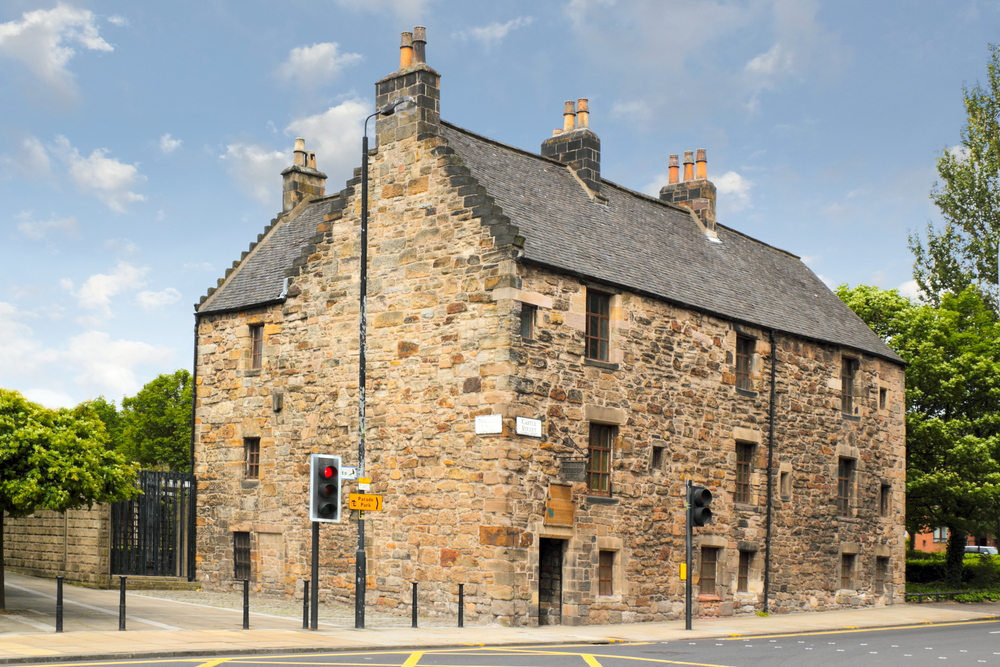Buying a listed building is a great way to own a piece of British history and play your part in preserving a property of genuine significance.
However, listed buildings come with complex rules and can require large budgets and lots of patience.
“Buying a listed building can seem very overwhelming with all the different rules and regulations in place,” says Rob Smith, Managing Director of Parkers.
“Remember to do your homework and know the grade of your house and what permissions you need if you’re planning on renovating it.
“With listed buildings often being well located with stunning exteriors, it’ll all be worth it if you do it right.”
In this guide, we explain what listed buildings are and outline all the rules you need to know about before you take the plunge and buy one.
What does it mean if a building is listed?
Listed buildings are properties with significant architectural or historical importance and are found on a national register which is in place to protect them.
Most buildings listed in the UK would have been built before 1840, but some dating from the early 1900s will be listed if they are of specific importance or were designed by a well-known architect.
There are around 400,000 listed buildings in the UK, classified across three grades depending on their significance:
- Grade I
- Grade II*
- Grade II
Buildings are either listed because they are of special architectural interest or special historical interest.
Listed buildings of architectural interest
To be listed, a building should:
- Be of specific design or decorative importance
- Demonstrate specific craftmanship or building technique
- Be a fine example of a specific building type
Listed buildings of historical interest
To be listed, a building should:
- Demonstrate the nation’s social, economic, cultural, or military history
- Have close associations with historically important people
- Be of specific design to support its historical relevance
When a building is listed, it is protected by laws, meaning consent is required to make changes to the property that could affect how it looks or cause damage to its original structure.
Listed building grades explained
Listed buildings in the UK are separated into three grades depending on their architectural or historical significance.
Grade I listed buildings
The rarest kind of listed building, these properties are of ‘exceptional interest’ architecturally or historically. Only 2.5% of all listed buildings in the UK are Grade I listed.
Grade II* listed buildings
Grade II* listed buildings are classed as being of ‘more than special interest’, with 5.8% of listed buildings in the UK falling into this category.
Grade II listed buildings
The most common form of listed building in the UK, with more than 90% of buildings falling into this category, Grade II listed properties are of ‘special interest’.
What is the difference between a listed building and a period property?
Period properties are homes constructed during a particular period in British history, while listed buildings are those that are of significant importance on Historic England’s National Heritage list.
Many period properties are also listed buildings – especially those built before 1840.
What is listed building consent?
Listed building consent is a form of planning permission in place to protect listed buildings from changes that could affect their architectural and historical significance.
Although listed building consent can be complicated and the rules may vary depending on the building and its specific listing, consent is usually required for all work that would affect the character of the building.
Consent is also usually required for any structures fixed to the building covered by the listing and any outbuildings within the main property’s curtilage that were built before 1948.
What can’t you do to a Grade II listed building?
You’d need to apply for listed building consent if you’re planning to carry out any work that would result in:
- The property’s whole or partial demolition
- The property’s architectural or historical character being affected
- Historic features or fittings being replaced
As well as the main listed property’s exterior, these rules also apply to the property’s interior and any buildings within the property’s curtilage that form part of the listing.
Common work that requires listed building consent includes:
Extensions
- Porches
- Dormer windows
- Conservatories
Adding or replacing fixtures
- Satellite dishes
- Shutters
- Alarms
- Pipes and guttering
External changes
- Rendering
- Cladding
- Exterior painting
Interior changes
- Removing or adding walls
- Removal or alteration of historic features such as doors, fireplaces, or panelling
- Some internal decoration work
Curtilage structure changes
- Alteration or demolition of outbuildings, garden walls, or statues
Listed building window regulations
Windows are one area of listed buildings that can have a major impact on their historical and architectural character.
So, rules around altering and replacing listed building windows are stringent and include:
- Changes to window detailing, including stained glass
- Replacing historical glass panes
- Changes to the type of timber used when the building was constructed
- Adding window boxes
Advice from Historic England on listed building windows says repair using like-for-like original materials should always be attempted before replacement, which would require consent.
What affects a listed building consent application?
When assessing your application for listed building consent, your local authority’s planning conservation officer will consider:
- Your building’s listed grade and its historical and architectural importance nationally and locally
- Specific features of the building, its design and location
- The building’s setting and how it contributes to the local area and blends with other buildings nearby
- The impact of your planned work on the building’s special interest
- The justification of the proposed work and any benefits it could bring to the building and the community
What can you do to a listed building without permission?
Listed building maintenance and repairs can usually be done without requiring permission if they are on a ‘like-for-like’ basis.
For example, repainting wooden sash windows on a listed Georgian property wouldn’t require listed building consent so long as the colour matched the existing paintwork.
It’s also unlikely that minor interior painting would require consent, unless the interior was of specific interest outlined in the building’s listing.
Emergency maintenance work and listed buildings
If you need to carry out emergency maintenance work on your listed building, you can usually do this without consent, but you’d need to be able to show:
- The work was needed urgently for health and safety reasons, or to protect the building
- The work was done to the minimum level necessary to protect the building
- That you notified the local authority of the work as soon as was practical
Tips for buying a listed building
Listed buildings are part of British history and owning one is a real privilege.
But these kinds of buildings come with lots of rules and regulations and can also require a lot of money to maintain, so there’s lots to consider.
These are our top tips if you’re thinking of buying a listed home…
1. Check the property’s National Heritage description
Once you’ve found a listed home you like, the next step is to read the property’s description on the National Heritage List.
The property’s description will tell you:
- It’s listing grade
- The date it was listed
- Details of the property’s historical or architectural significance
A property’s heritage list description will give you a much better idea of what parts of the property can’t be changed and what you may or may not need consent for.
If you’re still unsure, speak to your local authority’s planning and conservation officer, who’ll be able to tell you much more about the property you’re interested in.
2. Get a listed building survey
Having a property survey carried out is always a good step to take when buying a home – and for listed buildings, it’s even more important.
A full structural survey really is essential when purchasing a listed property and you should also try to find a surveyor who specialises in listed buildings.
3. Consider the costs of listed building maintenance
Because listed buildings require consent for most work you might wish to carry out, owning one does come with specific costs compared with a more modern property.
For example, if your property has a specific type of roof tile, it’s unlikely you’ll be able to replace them with modern tiles.
Instead, you may have to find like-for-like tiles from reclamation yards, as well as using a tradesperson who specialises in historic materials, which can be costly.
Listed buildings are also generally not as energy efficient as modern homes and as there are often restrictions on replacing windows and doors, it may cost you more to heat your property.
However, unlike other forms of planning permission, listed building consent is free.
4. You may need specialist insurance
Listed building insurance is generally more expensive than standard home insurance.
That’s because the cost of rebuilding a listed property would be substantially more, due to the need for specialist materials and trades.
5. Did the previous owners get consent?
Before purchasing a listed property, it’s important to find out that the seller
and other previous owners made changes or alterations with listed building consent.
By using a solicitor experienced in conveyancing for period homes, you can ensure they obtain the relevant paperwork to prove this.
If any previous owners did make alterations without consent and this is later discovered by Historic England, the cost of returning the property back to its original state would fall on you as the current owner.
Do listed buildings hold their value?
Listed buildings generally increase steadily in value over time, so they can make excellent long-term investments if they’re well looked after a cared-for.
Because listed buildings are so old, over time they are falling in numbers, meaning there is more demand for fewer and fewer properties, driving up prices.
Further reading…
- Everything you need to know about buying at auction
- Period properties explained
- Tips for buying a house to renovate
Still have questions? Contact your local Parkers branch today: www.parkersproperties….







